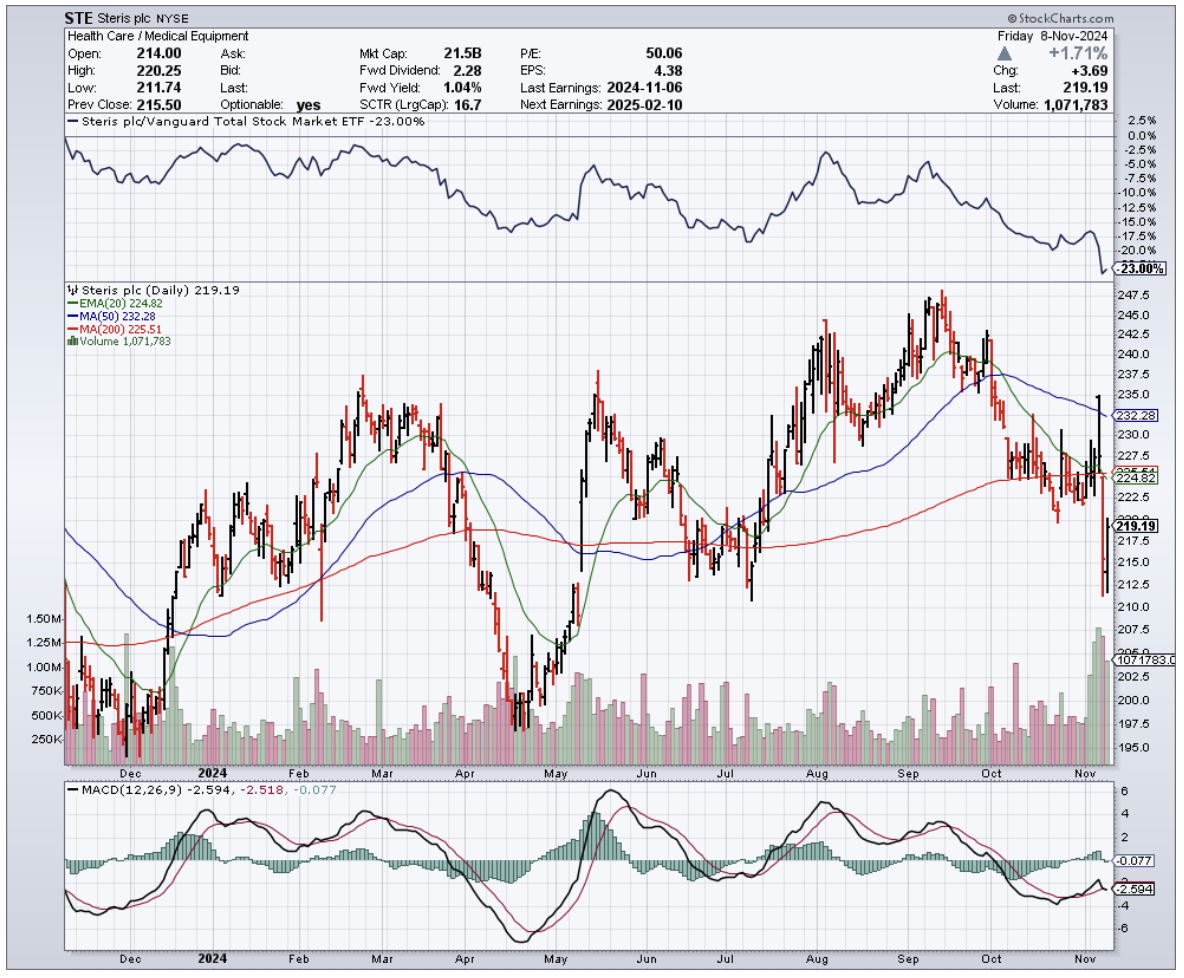After seeing Trump sweep back into office, my phone's been ringing off the hook with one question: "What happens to my portfolio now?"
Look, I've been around this circus since covering Reagan in the White House press corps, and I can tell you that market hysteria rarely matches reality.
But this time, we need to pay attention - especially in the $567 billion medtech industry that's about to face some serious disruption.
What's different now? Trump's not just talking about those 10% to 20% blanket tariffs anymore - he's dead serious about slapping a potential 60% tariff on Chinese imports.
And after spending years watching supply chains twist themselves into pretzels during COVID, this is going to hit different.
To understand just how big this could be, let's look at what's really at stake here.
In vitro diagnostics makes up 18% of the medtech industry, and cardiology devices are sitting at $75 billion in 2024, expected to hit $95 billion by 2028.
Those aren't just numbers on a page - they represent real money that could take a serious hit. If these tariffs go through, we're looking at a 3.2% hit to S&P 500 earnings per share in 2025.
And it gets worse - add another 1.5% drop if our trading partners decide to play hardball with retaliatory tariffs.
Given all this, where should you put your money? The answer lies in looking at who's already ahead of the curve.
Well, established players like Johnson & Johnson (JNJ) and Becton Dickinson and Co. (BDX) are looking increasingly shrewd with their local-for-local manufacturing strategy.
They might not give you the same adrenaline rush as scaling Mount Everest, but they're solid holds in this environment.
But they’re not the only companies securing their positions. ResMed (RMD), for instance, just posted third-quarter sales up 11% to $1.22 billion, with adjusted earnings jumping 34% to $2.20 per share.
That's not just good numbers - that's a company that knows how to execute regardless of who's in the White House.
In the same vein, Steris deserves attention. Their "front-shoring" strategy in Malaysia isn't just smart - it's prescient. After years of covering Asia for The Economist, I can spot smart positioning when I see it.
Now, let's talk about some of the bigger players in the room. Medtronic (MDT), our industry giant, is giving me pause.
Sure, they're a global leader, but their heavy reliance on Chinese manufacturing and components is about to become a serious headache under these new tariffs.
Same story with Boston Scientific (BSX) - they've got manufacturing facilities in China that could turn from assets to liabilities pretty quickly.
Stryker (SYK) and Zimmer Biomet (ZBH) are in the same boat, but with a twist. Both companies have been smart enough to spread their supply chains globally, but they're still catching enough Chinese exposure to make me nervous.
When those tariffs hit their component costs, watch their margins. This isn't just about bottom lines - it's about how much wiggle room these companies have to absorb higher costs without passing them on to hospitals and patients.
On the flip side, I'm watching companies like Tandem Diabetes Care (TNDM) with growing concern.
Their heavy Asian supply chain exposure under Trump's trade policies is going to be about as comfortable as my MIG-25 flight at 90,000 feet - and trust me, that wasn't comfortable at all.
But, what’s really telling is where the smart money is flowing.
Keep your eyes on three key trends that are reshaping the industry: supply chain resilience, M&A activity (now up 18% to $57.7 billion), and digital transformation.
About 30% of medtech companies are getting serious about digitizing their operations - and they're the ones to watch.
So, here's my bottom line: Trump's return is going to shake up medtech, but not every tremor is an earthquake.
The winners in this new landscape will be companies that have already diversified their manufacturing outside China, built up strong balance sheets to absorb these tariff impacts, and proven they can adapt - like ResMed and Steris have shown us.
The real champions will be those making serious investments in digital transformation. These are the companies that won't just survive Trump's trade policies - they'll thrive under them.
And if you're still holding onto companies with heavy Chinese exposure?
Well, let's just say it might be time to look for higher ground - and I'm speaking as someone who's made that call at both 20,000 feet on Everest and during the 2008 crash.
The medtech industry isn't going anywhere - people will always need medical devices. But which companies thrive under Trump's second term? That's going to depend on who's prepared for the storm and who's still standing in the open.
Now, if you'll excuse me, I've got some vintage wine to open. Making sense of these markets is thirsty work.


